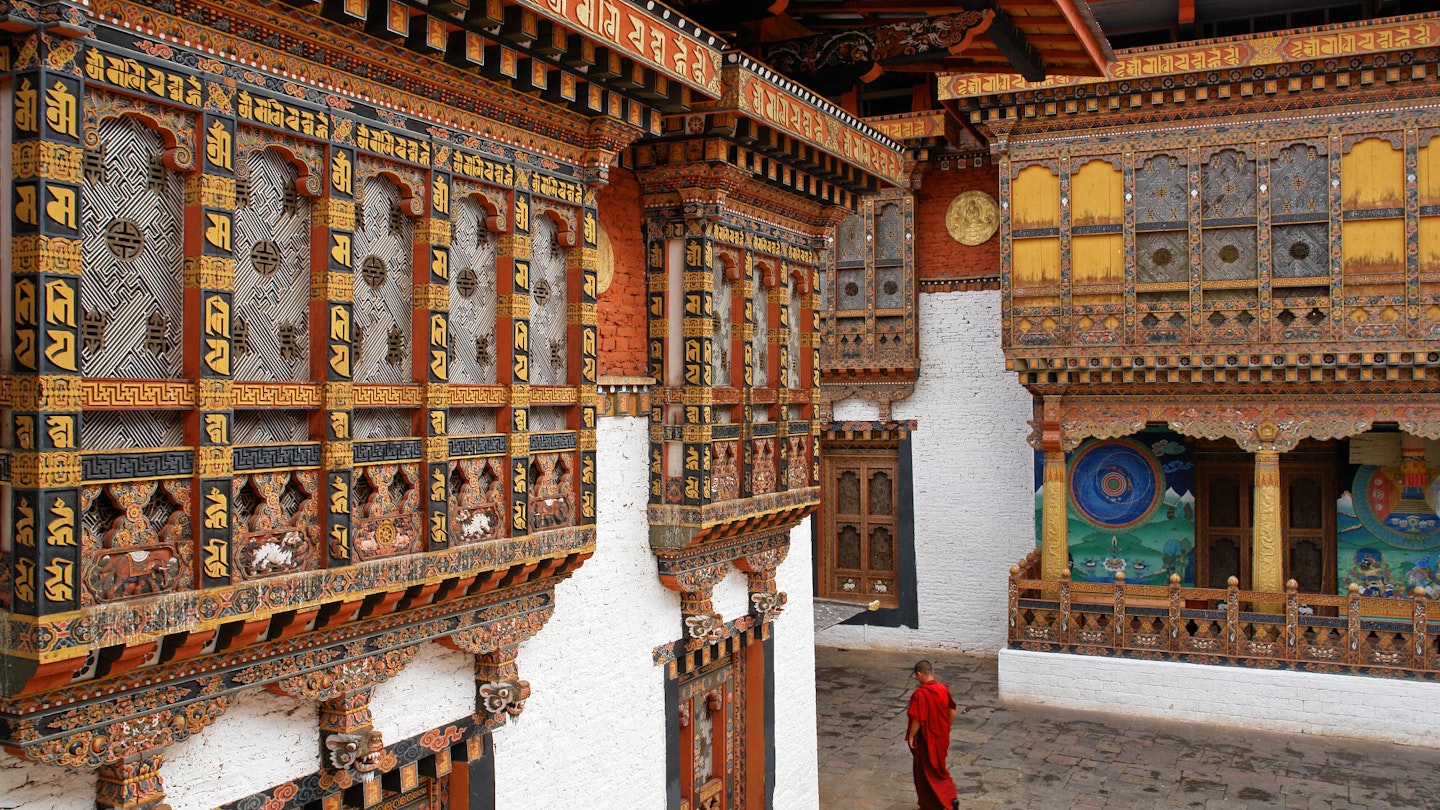Discover Bhutan: A Week-Long Itinerary for an Unforgettable Journey
Mention Bhutan to savvy travellers and you normally get two reactions. First comes a wistful ‘aaahh’, as people summon up hazy images of a pristine Himalayan kingdom, of colourful Buddhist festivals and a traditional culture that seems lost in an earlier age.
This is swiftly followed by a tear in the eye, as people remember that Bhutan is closed off to casual visitors and way beyond the average travel budget. In truth, Bhutan is one of the world’s more expensive destinations for independent travellers, but this is only half the story.
As part of its value-not-volume tourism policy, Bhutan imposes a mandatory fee of US$250 per person per day for tourists (US$290 for solo travellers). However, this includes your guide, private transportation, comfortable hotel accommodation, all food, and entry fees (as well as an entire trekking crew if you choose to trek). Moreover, it’s essential to understand that you can entirely tailor your Bhutan itinerary according to your time, budget, and preferences. This flexibility allows for hiking, overnight stays in farmhouses, or relaxing at a hotel spa. You don’t have to follow an agency’s preset tour.
It’s also important to note that just because Bhutan is exclusive, it doesn’t mean you’ll have the place to yourself. The vast majority of visitors only visit Bhutan once, often for less than a week, concentrating their time near the country’s only international airport in the parallel valleys of Paro, Thimphu, and Punakha. Consequently, it is common to encounter many other tour groups at the main attractions, especially during peak seasons, such as April and October, or during significant festivals.
Day One: Hiking, Culture, and Architecture in Paro
Start your adventure by securing the earliest morning flight to maximize your time in Paro. Begin with a visit to the fortress-like Paro Dzong, which offers a glimpse of Bhutanese architecture alongside an introduction to the vital role of Buddhism in the country’s governance. Next, the National Museum provides a perfect primer for understanding Bhutanese culture. For a refreshing experience, consider the one-hour hike to the 14th-century fortress of Zuri Dzong, which presents expansive views over the beautiful Paro Valley. The trail conveniently ends at the Uma Paro hotel, a great place to enjoy delicious local cuisine at Bukhari Restaurant.
Day Two: Journey from Paro to Thimphu
Driving to the capital Thimphu takes about three hours, and there are several intriguing stops along the way. One must-see location is the riverside Thamchog Lhakhang, where you can cross a traditional iron link bridge built by the remarkable 15th-century Tibetan engineer, Thangtong Gyalpo.
Day Three: Traditional Arts in Bhutan’s Capital, Thimphu
Start your day with a leisurely walk through Thimphu, a unique capital city that lacks a single traffic light (the other being Pyongyang). The charming bazaar area brims with shops selling Buddhist ritual items alongside contemporary gadgets, illustrating a fascinating blend of tradition and modernity. Photographers will enjoy the National Institute for Zorig Chusum, where students are trained in the 13 traditional arts of Bhutan, from statue making to thangka cloth painting and woodcarving. Finally, consult with a traditional astrologer at the nearby Changangkha Lhakhang, where locals seek auspicious names for their newborns.
Day Four: Views from Tango Monastery, Thimphu
For your second day in Thimphu, drive to the handsome Buddhist monastery of Tango Goemba. Along the way, enjoy views of the cantilevered Pangri Zampa bridge and a massive rock carving of Guru Rinpoche. The hour-long hike to Tango showcases its intricate wooden carvings, and from there, you can continue hiking to nearby Dhrolung Gompa, which receives very few foreign visitors.
If your visit coincides with the weekend, be sure to check out the weekend market, where you can find fresh, unprocessed incense, local-style datse cheese, and Bhutan’s famous pink rice, as well as Buddhist votive items and trinkets. It’s also an excellent time to experience Bhutan’s national sport at the Changlimithang Archery Ground. Finally, consider visiting one of the city’s trendy cafes or venues such as Mojo Park for live music.
Day Five: Himalayan Views and Stupas on the Way to Punakha
Begin your journey early with a drive to the Dochu La pass to witness stunning views of the Himalayas surrounded by memorial chortens (stupas). Next, visit Chimi Lhakhang to learn about Bhutan’s most outrageous saint, Drukpa Kunley, whose teachings often involved unconventional methods like sex and alcohol. In Punakha, spend a night at beautiful accommodations, ideally located near the sublime dzong, Bhutan’s most spectacular building.
Day Six: Scenic Drive Back to Paro
The return trip to Paro takes roughly six hours, so much of the day will involve driving. However, you can break the journey with a hike through rhododendron forests at the Dochu La (ideal in March or April) or by visiting Simtokha Dzong, Bhutan’s oldest surviving fortress. Alternatively, complete the drive directly and enjoy a relaxing stroll in the rice fields beside the Paro Chhu river before dinner.
Day Seven: Iconic Sights in the Paro Valley
There are two essential sights in the Paro Valley that you must not miss. The first is the seventh-century Kyichu Lhakhang, known for its extraordinary 1400-year-old statue of the young Buddha. The second is the two-hour hike to Taktshang Goemba (Tiger’s Nest), a sacred temple dramatically perched on a cliff-face. To truly immerse yourself in Bhutan’s spiritual essence, consider combining this visit with a trek to the surrounding meditation centres, staying overnight at Bumdrak.
As your week concludes, consider indulging in a traditional hot-stone bath, an experience characterized by a coffin-shaped wooden bathtub filled with Artemisia-scented water heated by sizzling hot stones. Many hotels provide this relaxing treatment, but several farmhouses in the Paro Valley offer a more authentic atmosphere, coupled with a traditional Bhutanese dinner. This experience rounds off your journey perfectly, leaving you with lasting memories of Bhutan.





